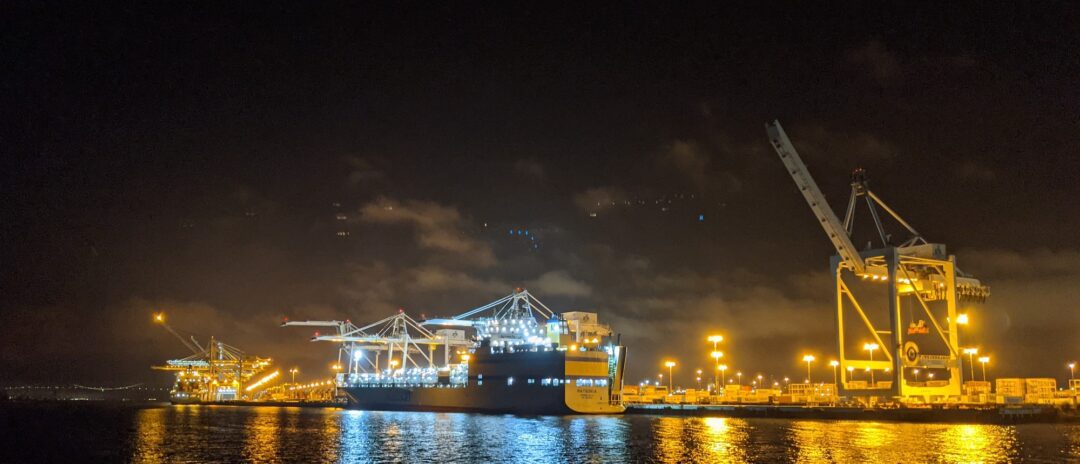The Client – Port of Long Beach
The City of Long Beach Harbor District (Port of Long Beach) is one of the nation’s leading seaports and a pinnacle of goods movement and environmental leadership. The Port has extensive experience overseeing significant projects designed to incorporate advanced technology across the goods movement sector to reduce impacts on the environment and surrounding communities. The Port is also a global leader in developing and implementing market-driving environmental policies, including the Green Port Policy and the San Pedro Bay Ports Clean Air Action Plan (CAAP).
The Challenge
The Port of Long Beach is committed to zero-emissions operations, but the technology isn’t proven yet and is not commercially available. One-off advanced-technology demonstrations help develop the zero-emission vehicles needed for this transition. Still, manufacturers and port operators need larger-scale demonstrations to see how these machines perform in different environments.
The Solution
The Port of Long Beach — in collaboration with the Port of Oakland and the Port of Stockton — developed a bold, transformative emission reduction deployment of innovative solutions. Sustainable Terminals Accelerating Regional Transformation (START) is a multi-agency and multi-industry collaboration to adopt a phased approach to achieving zero-emission port facilities through the deployment and demonstration of commercial and pre-commercial zero-emission technologies across an intermodal freight network.
Momentum worked with the Port of Long Beach to develop the project and grant proposal. In 2018, The California Air Resources Board awarded the Port of Long Beach $50,000,000, through the Board’s Zero- and Near Zero-Emission Freight Facilities Projects Solicitation, to fund this $100,000,000 project.
START is part of California Climate Investments, a statewide initiative that puts billions of Cap-and-Trade dollars to reduce greenhouse gas emissions, strengthen the economy, and improve public health and the environment — particularly in disadvantaged communities.
“Grant funding like this is important to help fight climate change because it helps the companies invest in these early-stage technologies that are largely unproven,” said James Dumont, a Momentum strategist focused on fleets and ports.
START Phase 1 is previewing a sustainable seaport facility: containers delivered by the world’s cleanest vessels, loaded onto zero-emission yard tractors and top handlers, handled by zero-emission rubber-tired gantry (RTG) cranes, transferred to zero-emission trucks headed for an off-dock cargo-handling facility that exemplifies system efficiencies, all supported by energy storage systems, energy-efficient strategies, community partnerships, and workforce development initiatives to facilitate the statewide transition to cleaner freight.

The Momentum team helped develop the grant proposal and is also managing the project. Momentum senior project manager and project management team lead, Andrea Swanson, is helping move this demonstration through the grant process.
“The goal of the project is to deploy new technologies that are not yet market-ready and to decrease both GHG and criteria emissions near the ports,” Swanson said. “This project is unique because of its collaborative nature. It isn’t just one port going after a grant and deploying it on its own. It’s three. We have the chance to see technologies work in different environments and build better relationships between each of the ports and the [surrounding] communities.”
The Result
As of fall 2021, many of the 101 pieces of zero- or near-zero emissions equipment are on-site and in use, providing powerful real-time feedback to the operators and manufacturers.
Electric forklifts are moving cargo around the Port of Stockton. The near-zero-emission ocean-going vessels are carrying containers across the seas. Teams at each port are learning valuable lessons about operating and maintain electric cargo-handling equipment. These lessons are vital to the future of the energy transformation in our port systems.
The Port of Long Beach’s managing director of planning and environmental affairs, Heather Tomley, said demonstrations like this are vital to reaching zero emissions.
“START gives us an opportunity to build on those and really look at how you can incorporate these technologies into operations,” said Tomley.
Operators can send valuable feedback to the manufacturers to make adjustments and get the next generation of these machines market-ready – all while cutting emissions at the ports.
“We really want to act as responsible community members. Deploying this equipment in Stockton is helping reduce [environmental] impacts on the adjacent community as well as the greater City of Stockton.” Jeff Wingfield, Port of Stockton director of environmental and public affairs.
By collaborating on this project, the Ports and the equipment manufacturers could deploy electric equipment and charging infrastructure at a larger scale, moving everyone one step closer to a zero-emissions future.
“It really takes everyone united with a bold vision and a detailed plan, and that’s what we’re doing. We want to show that you can choose to grow green, choose to grow jobs, and choose to protect the environment,” said Mario Cordero, executive director of the Port of Long Beach.

